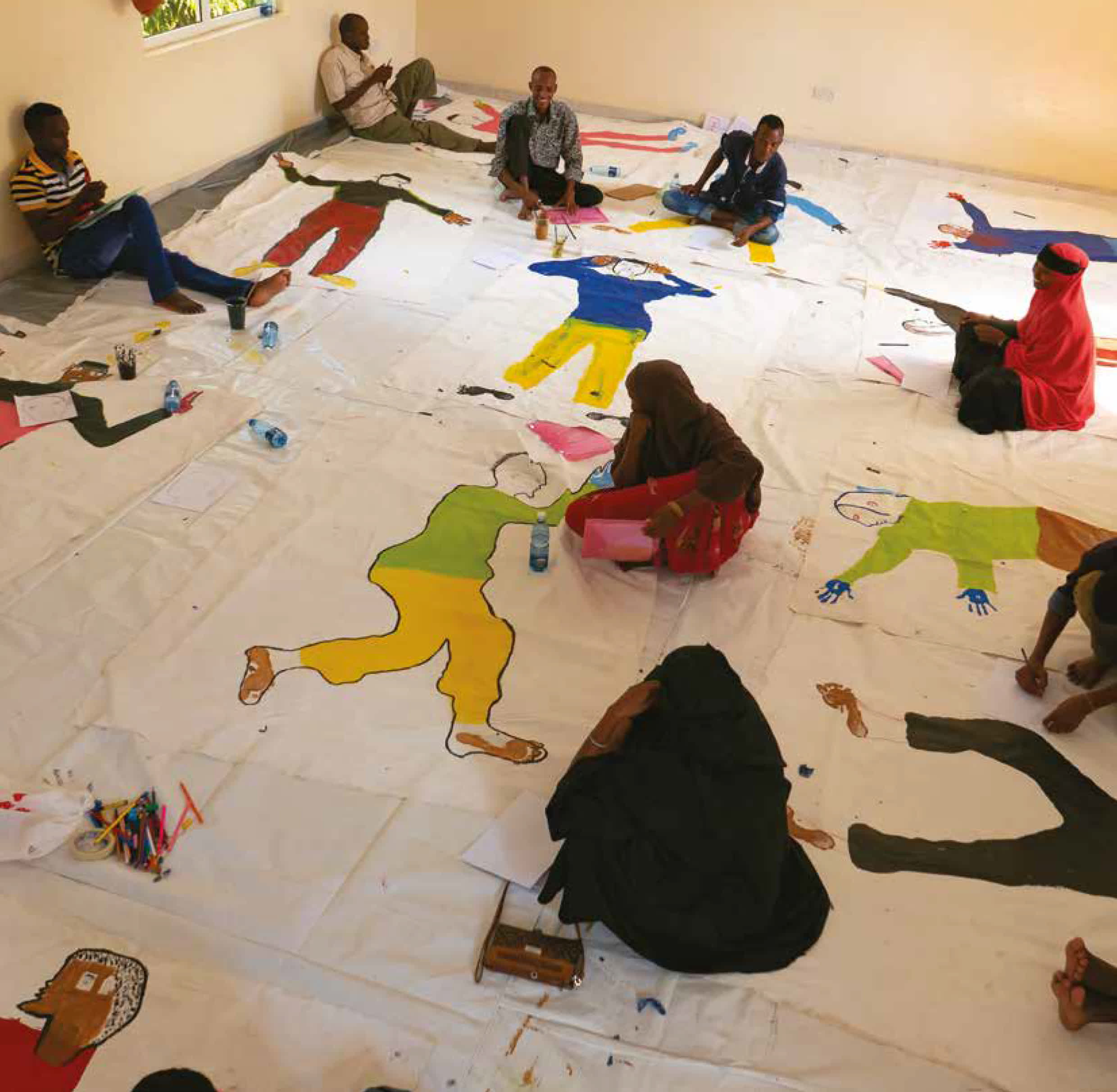Approach & Methods
As for many other peacebuilding organisations, attention to relationships runs through our work from dialogue groups in Dalanj (Sudan) to regional policy spaces.

Along with our partners, our work draws on a mix of peacebuilding methods and tools, which are used and applied depending on the conflict issues at hand and contextual opportunities for engagement. Importantly, we seek to build on the local knowledge and skills of people experiencing conflict in the Horn of Africa (HoA) and the Great Lakes region.

Dialogue
Dialogue is the art of bringing people with different experiences and perspectives together to listen and share. The first and foremost outcome of dialogue is broadening and deepening understanding, which may lead to changed relationships and catalyse joint action to address conflict. Dialogue is a core ingredient across our programmes. With our partners, we work with different models of dialogue in our programmes, including Sustained Dialogue (SD), community dialogues, women-to-women dialogues and dialogues building on traditional methods of conflict resolution.

Sustained Dialogue (SD)
is a dialogue methodology developed by the late Dr. Harold Saunders, president and founder of the International Institute for Sustained Dialogue (IISD), to promote positive long-term changes in attitudes and to raise the level of tolerance in society. SD enables adversarial relationships to change through the opportunity of meeting and engaging in meaningful dialogue over time. A safe space makes it possible for people from different sides of an issue to address the problems by providing a framework to think critically about the obstacles they are facing as they strive to improve their relationship. The process is driven by the participants and facilitated by trained group members.
SD is relevant for settings where a diversity of groups interacts, such as universities. The SD method is not ‘just talk’; further along into the process, the dialogue groups will engage in scenario-building where one looks for pro-active steps and positive solutions for the pressing issues that have been discussed as well as acting together to see that the solutions are implemented.
The power of SD lies in that it is ongoing. Each meeting builds on the previous making it possible for the group to (1) develop a cumulative agenda, with questions sharpened and carried from one meeting to the next; (2) build a common body of knowledge that participants could test between meetings; and (3) learn to talk and work analytically together. Coming together with a group of 10-15 other individuals over a continued period gives time to build relationships, to better understand one another, to see real growth, and to develop a network of allies who are committed to making a change in their community.

Conflict Analysis, Research and Evidence Generation
Local knowledge is a cornerstone of conflict transformation processes. It is only through deep understanding about how conflict comes about that strategic engagement with conflict can begin. Developing this understanding is an act of transformation in itself. A diversity of analysis, research and evidence generation processes are employed in LPI-supported work, drawing on, and innovating, the Institute’s history to support peacebuilding responses through research. Generating insights is most powerful when it informs us, our partners, community stakeholders and policy actors to act differently in peacebuilding. For many years, we have worked with Participatory Action Research (PAR) processes as vehicles to bring new perspectives and understanding into dialogue process and collective action on conflict.

Participatory Action Research (PAR)
for Conflict Transformation aims at the identification and acquisition of nonviolent solutions to conflict, differing from classical research and other interventions because it establishes a new relationship between research and action, theory and practice, and researcher and conflict stakeholders. The process produces knowledge at the same time as it transforms reality and, as the name implies, is inherently participatory. All parties involved in a destructive or intractable conflict are engaged in a process of analysing the range of interpretations of conflict causes and consequences, and the identification of constructive actions for the future.

Using the arts and technology for peace-building goals
Art can open up and expand the views of individuals and communities, challenging and changing assumptions about oneself and others. Artistic practices can increase understanding of different perspectives, creating greater empathy and inclusion. Some of the artistic methods used include Body Mapping, theatre, poems, songs, music and ceremonies. Using skits, spoken word and longer performances served to extend peace-building work in urban settlements in Nairobi to more people, highlighting alternatives to violence. Theatre, being accessible and entertaining, has provided a channel through which diverse youth can both participate and observe. Those methods allow for self-expression and self-reflection, may deepen dialogue and visualise alternative ways of living and acting in the face of conflict.
Technology, from the use and access to mobile communication and social media to geo-spatial mapping and virtual reality, can be resources for peace-building and serve to bridge stakeholders who may be hard to connect – such as borderland communities and policy makers – in new ways. with our partners, particularly for HARP, we have explored the use of technology for peacebuilding over the last years.
